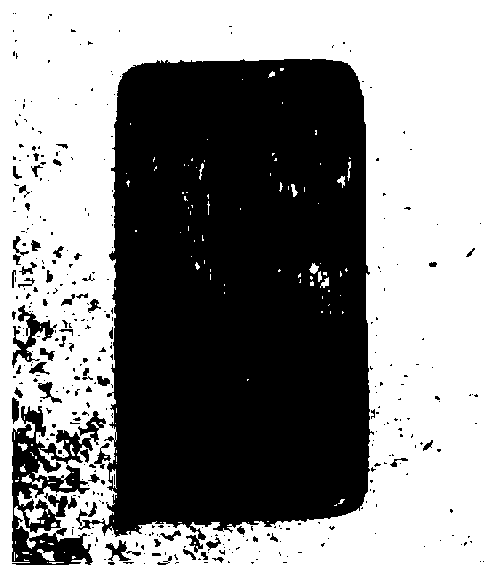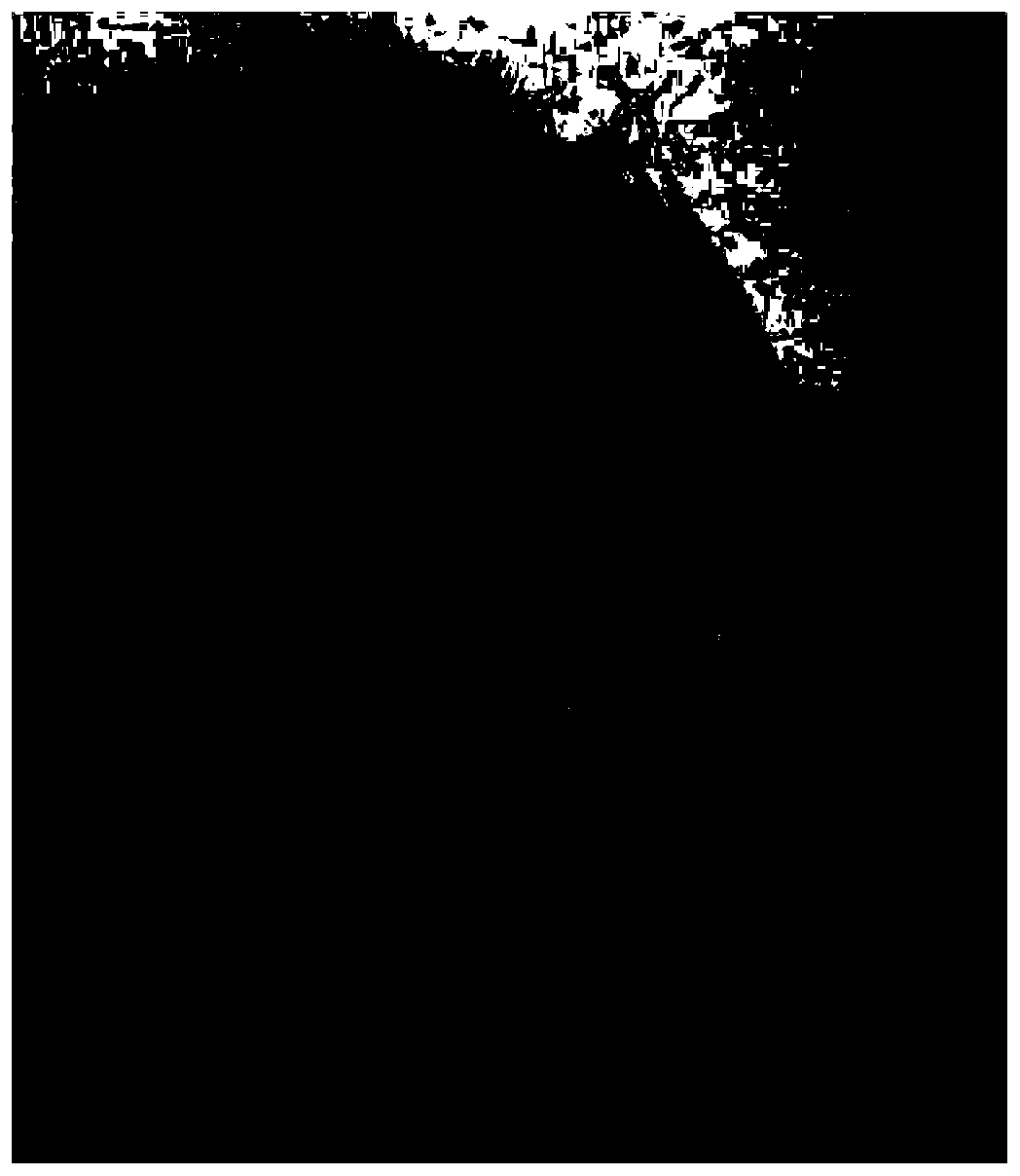Method for degradation of composite material by directional bond breaking and recovery of fiber from composite material
A composite material and recycled fiber technology, applied in the field of recycled fiber, can solve the problems of low fiber mechanical strength retention rate, difficulty in large-scale application, low degradation rate of thermosetting resin, etc., to achieve easy industrial application, easy separation, purification and reuse, Simple Effects of Components
- Summary
- Abstract
- Description
- Claims
- Application Information
AI Technical Summary
Problems solved by technology
Method used
Image
Examples
Embodiment 1
[0034] A method for directional bond breaking to degrade composite materials and recover fibers therefrom, comprising the steps of:
[0035] 1) if figure 1 As shown, cut the carbon fiber / phenolic resin composite material into a square with a length of about 3cm, a width of about 1cm, and a thickness of about 4mm, and set aside;
[0036]2) Place the carbon fiber / phenolic resin composite material block in a 50mL reaction kettle, add 5mL water, 10mL n-propanol, 5mL acetone, 2ml N,N-dimethylformamide, 3ml tetrahydrofuran, 1.2g anhydrous zinc chloride , 0.2g disodium edetate, 1.5g potassium hydroxide, 0.5g sodium nitrate, then seal the reaction kettle, heat up to 250°C, and keep it warm for 4 hours (heat treatment), so that the carbon fiber / phenolic resin composite material block is degraded Completely, then, naturally cool to room temperature, and carry out high-speed centrifugation, make carbon fiber separate from reaction liquid phase product, obtain carbon fiber crude product,...
Embodiment 2
[0043] A method for directional bond breaking to degrade composite materials and recover fibers therefrom, comprising the steps of:
[0044] 1) Cut the glass fiber / epoxy resin composite material into squares with a length of about 1cm, a width of about 1cm, and a thickness of about 4mm, and set aside;
[0045] 2) Place the glass fiber / epoxy resin composite material block in a 50mL reaction kettle, add 8mL water, 1ml acetone, 1ml methyl ether, 5mL tetrahydrofuran, 4ml acetic acid, 4.3g anhydrous zinc acetate, 2.5g anhydrous zinc chloride , 0.8g anhydrous calcium chloride, 3mL n-propanol, 5ml 30% hydrogen peroxide, 0.3g potassium nitrite, then seal the reaction kettle, heat up to 100°C, and keep warm for 6 hours (heat treatment), so that the glass fiber / epoxy The resin composite block is completely degraded, then cooled naturally to room temperature, and subjected to high-speed centrifugation to separate the carbon fiber from the reaction liquid phase product to obtain a crude g...
Embodiment 3
[0051] A method for directional bond breaking to degrade composite materials and recover fibers therefrom, comprising the steps of:
[0052] 1) Cut the carbon fiber / unsaturated polyester resin composite material into squares with a length of about 2.5cm, a width of about 1cm, and a thickness of about 8mm, and set aside;
[0053] 2) Place the carbon fiber / unsaturated polyester resin composite material block in a 50mL reaction kettle, add 6mL water, 2ml acetone, 5mL n-butanol, 3ml tetrahydrofuran, 5ml dimethyl sulfoxide, 2.8g anhydrous ferric chloride, 1.2 g anhydrous zinc chloride, 3ml disodium edetate, 2ml triethanolamine, 1ml concentrated sulfuric acid, 2ml acetic acid, 0.5g sodium thiosulfate, then seal the reaction kettle, heat up to 200°C, and keep warm for 3 hours (heating treatment) to completely degrade the carbon fiber / unsaturated polyester resin composite block, then cool naturally to room temperature, and carry out high-speed centrifugation to separate the carbon fib...
PUM
| Property | Measurement | Unit |
|---|---|---|
| Tensile strength | aaaaa | aaaaa |
| Monofilament tensile strength | aaaaa | aaaaa |
| Monofilament tensile strength | aaaaa | aaaaa |
Abstract
Description
Claims
Application Information
 Login to View More
Login to View More - R&D
- Intellectual Property
- Life Sciences
- Materials
- Tech Scout
- Unparalleled Data Quality
- Higher Quality Content
- 60% Fewer Hallucinations
Browse by: Latest US Patents, China's latest patents, Technical Efficacy Thesaurus, Application Domain, Technology Topic, Popular Technical Reports.
© 2025 PatSnap. All rights reserved.Legal|Privacy policy|Modern Slavery Act Transparency Statement|Sitemap|About US| Contact US: help@patsnap.com



